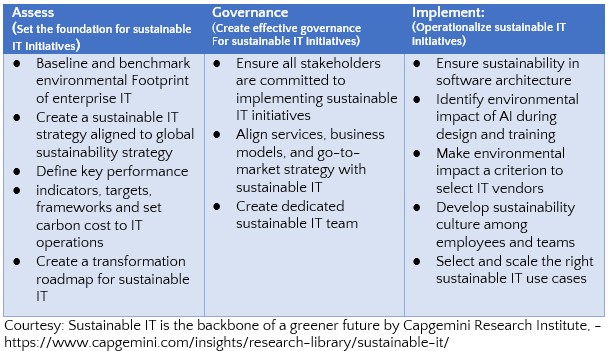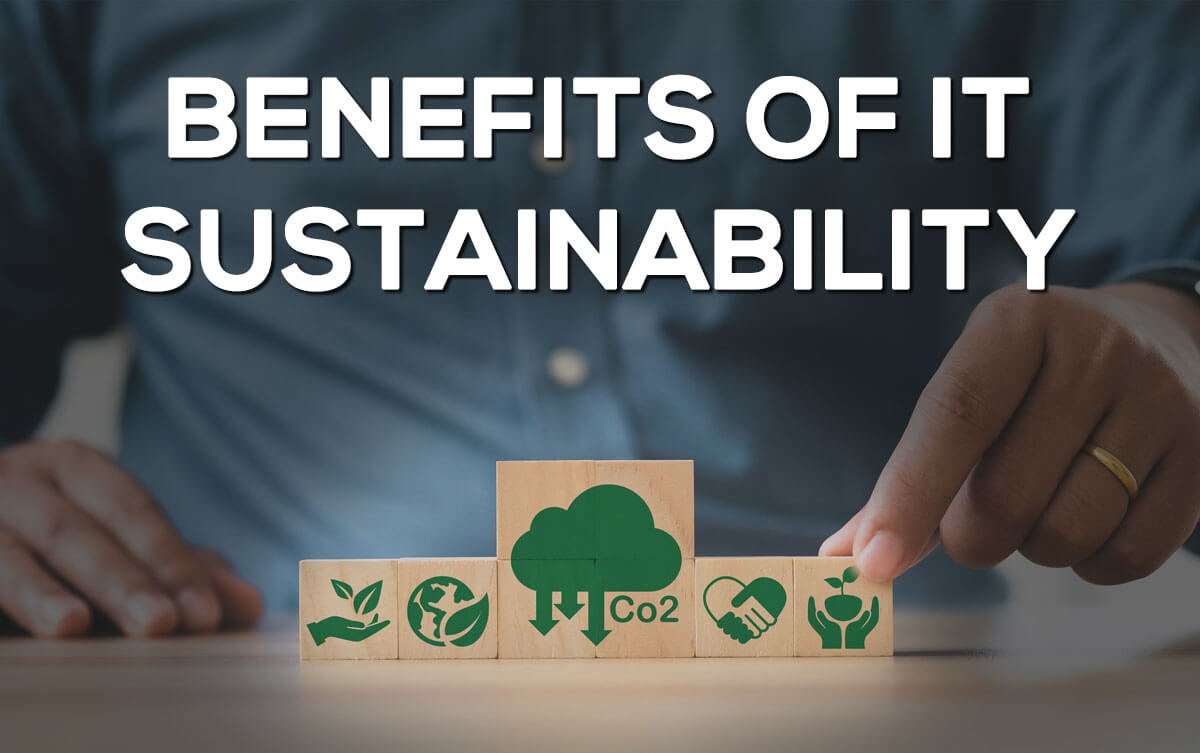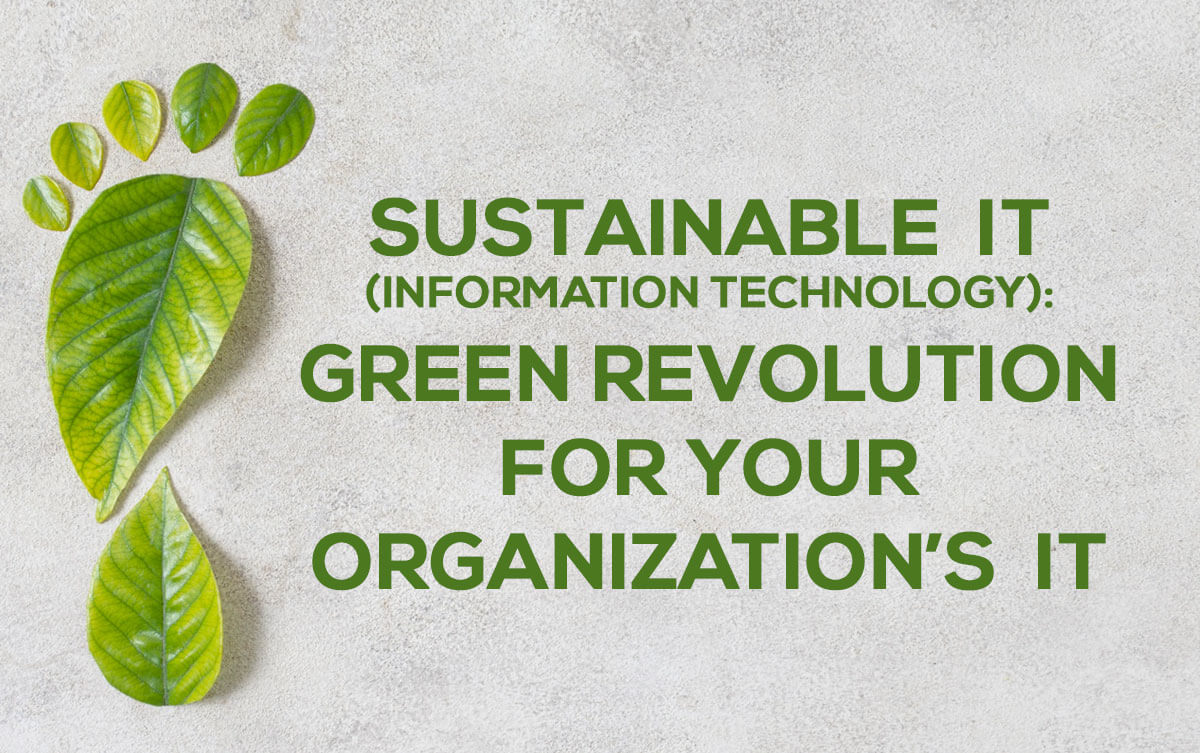Sustainable IT – Green revolution for your organization’s IT
The phrase “sustainable development” was adopted and popularized in 1987 by Norwegian Prime Minister Gro Harlem Brundtland. The Brundtland Commission provided a definition of sustainable development that was used for the next 25 years: “development that meets the needs of the present without compromising the ability of future generations to meet their own needs.”
Over time, the definition of sustainable development has evolved to capture a more holistic approach, linking the three dimensions of sustainable development: economic development, social inclusion, and environmental sustainability
“I think every job of the future will require people to save this planet.” says Satyam Vyas, founder and CEO of Arthan and Climate Asia. ”If you are an accountant, start thinking about carbon accounting. If you are an engineer, start thinking about better designs which are more sustainable. If you are in finance, think about green investments. This is an opportunity where all of us can have skills to apply.”
Problem at Hand
● Enterprise IT, by 2025, will have the equivalent carbon footprint of:463 million passenger vehicles driven for a year
● 89% of organizations recycle less than 10% of their IT hardware.
● 49% say a major challenge, when it comes to implementing sustainable IT initiatives, is the lack of tools or standards/ratings to evaluate the carbon footprint of IT
Implementation challenges
● Lack of domain expertise to implement sustainable IT initiatives
● High cost of setting up sustainable IT infrastructure
● Impact on business continuity when shifting away from legacy systems
● Identifying correct use cases to invest in
Sustainable IT
Sustainable IT is an umbrella term that describes an environment-focused approach to the design, use, and disposal of computer hardware and software applications and the design of accompanying business processes.
Key Aspects
● Application of eco-design principles
● Design of sustainable IT architectures.
● Organizational reporting related to environmental disclosures
● Governance of sustainable IT initiatives.
● Sustainable IT is not only limited to the migration to greener hardware and energy. Organizations are trying to be more sustainable through initiatives, such as apps rationalization and green coding.
Roadmap for Sustainable IT Implementation

Benefits of IT sustainability:

Capgemini analysed the maturity of the 1,000 organizations in its cross-sector sample towards Sustainable IT. It found that Organization with high maturity across foundational steps, Governance, and operationalising sustainable IT initiatives derive considerable benefits
- 61% of High Maturity Organizations have improved their ESG (environmental, social, and governance) score and brand image, compared to 45% of other organizations.
- 56% have improved customer satisfaction (vs 43%).
- 44% say green practices deliver tax savings (vs 22%).
Sustainable IT – applying an environment-focused approach across the enterprise IT landscape (Enterprise IT Transformation)
Some sustainable IT use cases
- User Hardware- Procuring hardware and user devices with minimum lifecycle carbon cost, Improving employee awareness of device utilization and sustainability, Proper disposal, recycling and refurbishment of hardware, Prolonged lifespan (Circular Economy)
- Networks and Communication- Deploy edge computing to reduce network transfers, Use efficient data transfer mechanism
- Applications and data for sustainable architecture: Eco-design applications to minimize resource utilization, develop sustainable architectures to rationalize applications, and identify and decouple energy intensive applications. Streamline data architecture and optimize the data lifecycle. Design efficient and sustainable AI applications
- Cloud Computing- Switch to a green cloud architecture and framework, Use AI/ML to optimize data center utilization and improve, cooling solutions, 4. Utilize or shift to public cloud utilizing low carbon grids





